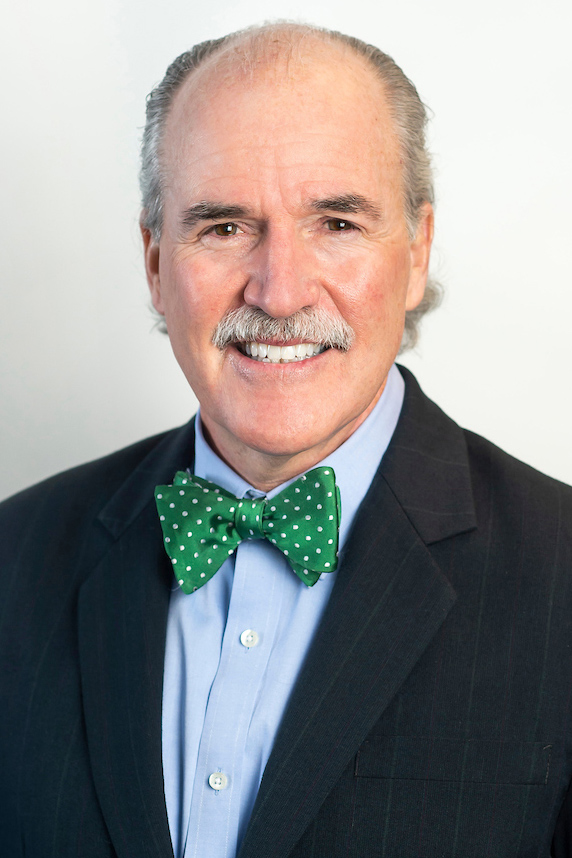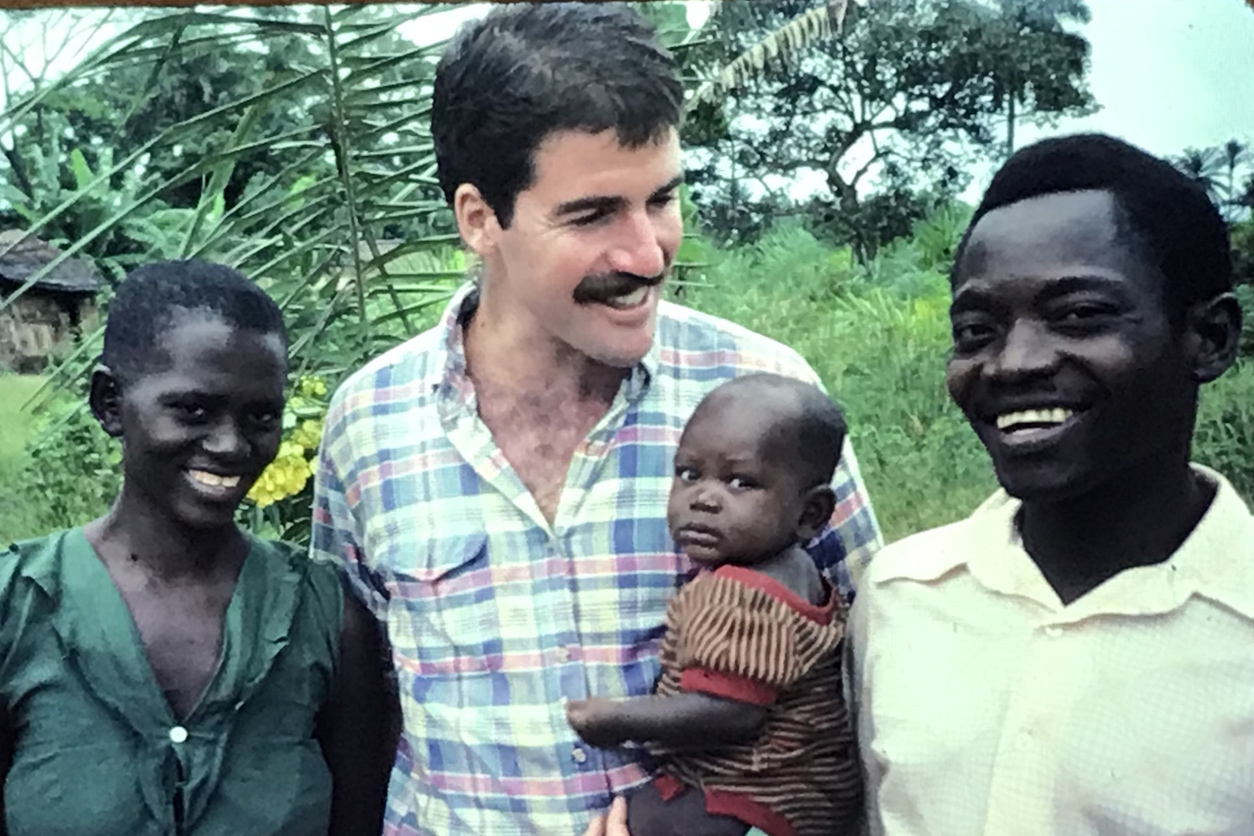
I recently sat down with Peter Kilmarx, M.D., acting director of the NIH Fogarty International Center (FIC), to discuss adaptation science, a critical yet often overlooked area in the broader conversation on climate change.
As climate-related environmental challenges and extreme weather events continue to intensify, adaptation science — which is about understanding and implementing strategies to strengthen health and resiliency — becomes paramount.
Also, health threats posed by climate change are global in nature, so fostering international scientific collaboration — central to the mission of FIC — is critical. That is one reason why I am excited to share excerpts of my talk with Dr. Kilmarx, as he brings a wealth of experience and knowledge on how to build effective global partnerships. For me, the conversation served as a strong reminder of the interconnectedness of climate change and human health, and the role of multidisciplinary science in helping people everywhere to improve health outcomes.

Expanding research partnerships
Rick Woychik: Let’s kick things off by first talking about the Fogarty International Center and your major focus areas.
Peter Kilmarx: Sure. The Fogarty International Center is the smallest of the NIH institutes and centers based on our budget and staffing, but we have a very big mission, which is to support all of NIH in its global research activities. We focus especially on training and capacity building in lower income countries to expand scientific partnerships between those countries and NIH, and we work a lot in infectious diseases and noncommunicable diseases.
It is not often appreciated that NIH is in fact a global enterprise. A few years ago, we found that there are about 80,000 scientific publications each year that cite NIH funding, and 35% of those publications have coauthors outside of the U.S. We discovered that those publications actually have a higher scientific impact factor compared with those with only U.S. authors.
Climate change and health
RW: Fogarty was among the first NIH institutes and centers to actively participate in the NIH Climate Change and Health Initiative, which NIEHS is helping to lead. Can you elaborate on Fogarty’s interest in this area?
PK: Climate change is certainly a focus at Fogarty because it represents a significant health threat on a global scale. There’s a scientific imperative to learn more about how it will affect us and to discover what we can do to minimize the negative impacts. That kind of research requires a multidisciplinary approach, and it involves almost every NIH institute’s scientific interest.

Fogarty has played a role in supporting and coordinating research efforts related to climate change involving multiple institutes and centers, such as through our Global Environmental and Occupational Health Program, which NIEHS has participated in. I should add that the social justice aspect of climate change — where lower income countries face the greatest impacts — resonates with Fogarty’s mission, and we are committed to addressing these disparities.
Extreme weather’s direct and indirect effects
RW: What are some of the direct and indirect effects of climate change that you think will require increased research moving forward?
PK: Direct effects, such as injuries, infectious diseases, and mental health issues, can stem from extreme weather events like cyclones and flooding, where massive loss of live can devastate families and entire communities. Extreme conditions also pose risks to agricultural and factory workers through heat exhaustion, stroke, and acute kidney injuries. Furthermore, climate change is altering disease vectors, introducing infectious diseases to new regions.
Indirect consequences include things like destruction of healthcare infrastructure by hurricanes, where patients who depend on ongoing treatments such as dialysis or chemotherapy find their care networks disrupted. Moreover, climate change is exacerbating migration and refugee crises, with people fleeing their homes due to droughts and storms. These shifts have profound impacts on mental health, contributing to climate anxiety and other concerns.
Adaptation science
RW: What exactly is adaptation science? And how does it differ from climate mitigation?
PK: While there’s some overlap between the two, mitigation tends to focus on prevention of climate change, and adaptation tends to emphasize managing its impact.
Mitigation involves reducing emissions or increasing absorption of greenhouse gases, encompassing strategies from renewable energy to changes in transportation and diet. Adaptation acknowledges the reality of climate change, focusing on adjustments to minimize its effects through a variety of strategies, including biomedical, behavioral, and structural changes.
Adaptation strategies are as varied as the direct and indirect challenges we just discussed. For outdoor workers, simple measures like providing rest, shade, and hydration can significantly reduce the risk of acute kidney injury. But many seemingly beneficial proposed strategies will require careful health impact evaluations and research moving forward.
Understanding unintended consequences
RW: Can you expand on that?
| SDGs | Targets | Indicators |
|---|---|---|
| SDG 3: Good Health and Well-being | Target 3.9: By 2030, substantially reduce the number of deaths and illnesses from hazardous chemicals and air, water, and soil pollution and contamination. | No specific indicators mentioned in the article. |
| SDG 13: Climate Action | Target 13.1: Strengthen resilience and adaptive capacity to climate-related hazards and natural disasters in all countries. | No specific indicators mentioned in the article. |
| SDG 17: Partnerships for the Goals | Target 17.16: Enhance the global partnership for sustainable development, complemented by multi-stakeholder partnerships that mobilize and share knowledge, expertise, technology, and financial resources. | No specific indicators mentioned in the article. |
1. Which SDGs are addressed or connected to the issues highlighted in the article?
- SDG 3: Good Health and Well-being
- SDG 13: Climate Action
- SDG 17: Partnerships for the Goals
Explanation:
The article discusses the connection between climate change and human health, highlighting the need for adaptation science to strengthen health and resiliency. This aligns with SDG 3, which aims to ensure good health and well-being for all. The article also mentions the importance of addressing climate change as a significant health threat on a global scale, which relates to SDG 13, focused on climate action. Additionally, the article emphasizes the role of international scientific collaboration and partnerships, which aligns with SDG 17, promoting partnerships for the goals of sustainable development.
2. What specific targets under those SDGs can be identified based on the article’s content?
- Target 3.9: By 2030, substantially reduce the number of deaths and illnesses from hazardous chemicals and air, water, and soil pollution and contamination.
- Target 13.1: Strengthen resilience and adaptive capacity to climate-related hazards and natural disasters in all countries.
- Target 17.16: Enhance the global partnership for sustainable development, complemented by multi-stakeholder partnerships that mobilize and share knowledge, expertise, technology, and financial resources.
Explanation:
The article does not explicitly mention specific targets under the SDGs. However, based on the issues discussed, we can identify relevant targets. Target 3.9 focuses on reducing deaths and illnesses caused by pollution and contamination, which relates to the health threats posed by climate change mentioned in the article. Target 13.1 emphasizes strengthening resilience and adaptive capacity to climate-related hazards, aligning with the need for adaptation science to address the impacts of climate change on health. Target 17.16 highlights the importance of global partnerships and collaboration, which is emphasized throughout the article.
3. Are there any indicators mentioned or implied in the article that can be used to measure progress towards the identified targets?
No specific indicators mentioned in the article.
Explanation:
The article does not mention any specific indicators that can be used to measure progress towards the identified targets. However, indicators related to deaths and illnesses from pollution and contamination, resilience to climate-related hazards, and global partnerships can be developed to track progress towards these targets.
4. SDGs, Targets, and Indicators
| SDGs | Targets | Indicators |
|---|---|---|
| SDG 3: Good Health and Well-being | Target 3.9: By 2030, substantially reduce the number of deaths and illnesses from hazardous chemicals and air, water, and soil pollution and contamination. | No specific indicators mentioned in the article. |
| SDG 13: Climate Action | Target 13.1: Strengthen resilience and adaptive capacity to climate-related hazards and natural disasters in all countries. | No specific indicators mentioned in the article. |
| SDG 17: Partnerships for the Goals | Target 17.16: Enhance the global partnership for sustainable development, complemented by multi-stakeholder partnerships that mobilize and share knowledge, expertise, technology, and financial resources. | No specific indicators mentioned in the article. |
Behold! This splendid article springs forth from the wellspring of knowledge, shaped by a wondrous proprietary AI technology that delved into a vast ocean of data, illuminating the path towards the Sustainable Development Goals. Remember that all rights are reserved by SDG Investors LLC, empowering us to champion progress together.
Source: factor.niehs.nih.gov

Join us, as fellow seekers of change, on a transformative journey at https://sdgtalks.ai/welcome, where you can become a member and actively contribute to shaping a brighter future.






